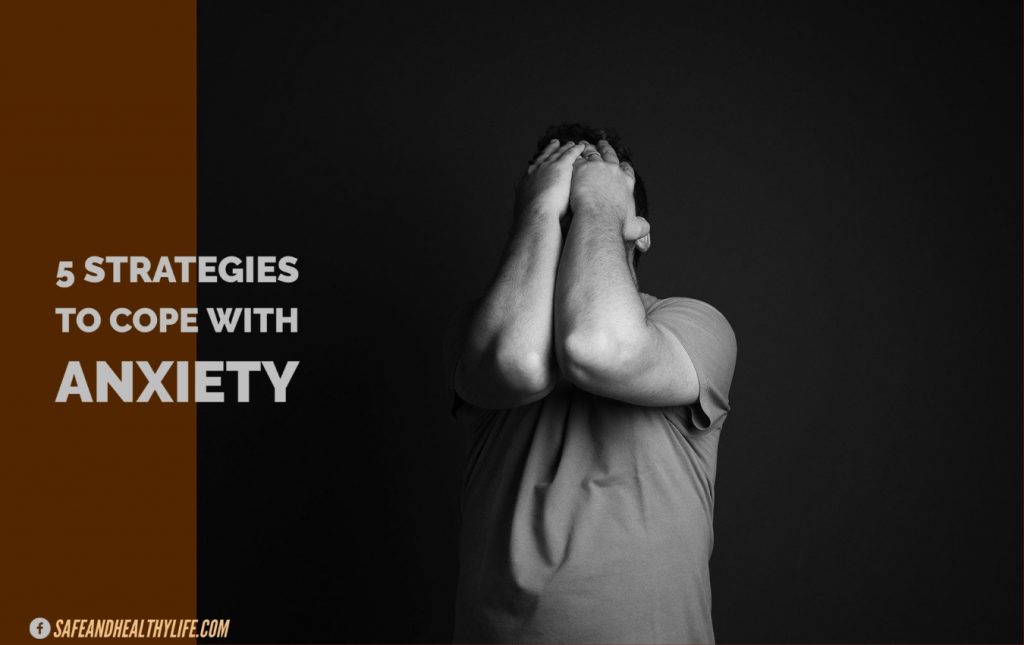
Severe anxiety and depression can be crippling. In this article, we reveal five professionally attested coping strategies that can help you to soothe yourself when you are overwhelmed by your feelings.
These techniques are designed to help you move beyond the impasse and get one with a productive day.
The 5 Senses Technique
Your five senses are powerful tools to help you to move beyond feelings of anxiety. Those five senses are:
- Sight
- Sound
- Taste
- Hearing
- Touch
In order to prepare to use the five senses technique when you are stressed, get a piece of paper and write down the five senses during a period of calmness.
Then, alongside each of the senses, write down the one key thing that makes you feel good in relation to that sense.
For example, you may find that beautiful sunset or watching a cat playing with a ball of wool brings you delight. Whatever, it is, write that thing down for each of the senses.
Once you have written down the five things that make you feel great in relation to your senses, set about collecting together all of those things and bringing them together in one place.
You may have to use a photograph for some of them, such as the cat playing with a ball of wool. If meditation music is your feel-good sound sensation have it keyed up and ready to play.
Maybe your favorite sweater is your touch item; have it in the same space as your other items. This area will become a safe space.
When you are feeling anxious, go to your safe space and immerse yourself in your five senses objects. Experience all five of the senses and allow those good feelings to drown out your anxiety.
Identify your Triggers

Photo Credit: Unsplash
By objectively analyzing your bouts of anxiety, you will be able to identify certain triggers that bring on your uneasy feelings. You may find that most of your anxiety is brought on by such external factors as alcohol or drinking too much coffee.
On the other hand, it may be such things as a specific topic of conversation, a person, or a work situation.
Do you have a tendency to take on too many commitments, resulting in feelings of being swamped?
Once you have identified your triggers, make plans to actively minimize your exposure to them. For some of them, you may be able to identify ways to alleviate the bad situation that is causing your anxiety.
For example, if your anxiety is caused by your ongoing struggles to pay your mortgage, take proactive steps by making an appointment to meet with your bank manager. Explain your situation and come to an arrangement that will work for both of you.
Breathing Techniques

Photo Credit: Pexels
Your breath has a powerful ability to help calm you down. Breathing too quickly with rapid in and outs is actually one of a number of physical anxiety symptoms that can lead to a person hyperventilating. In order to calm yourself, you should do the opposite by lengthening your exhalations.
Exhaling has been found to be connected to the parasympathetic nervous system, which promotes a relaxed, calm state.
You can help to promote this state by taking a little longer to exhale than you inhale. Just remember the numbers ‘four’ and ‘six’. Take a four-count to inhale and a six-count to exhale.
That amounts to a ten-second breath which is probably ten times slower than your normal breath. Practice this slower breathing during periods of calmness so that it becomes second nature when you really need it.
Research Online
The internet has made available a lot of dubious advice regarding mental health. But it has also provided access to excellent professional guidance that is available free of charge. The secret is to differentiate between the two.
One way to do that is to stick to only verified medical health blogs and websites. There you will find advice from some of the world’s most respected mental health professionals.
Challenge Your Assumptions

Photo Credit: Pixabay
Feelings of anxiety are often compounded by irrational or negative thoughts that fill our minds. However, you do not have to blindly accept these thoughts as gospel.
Though it can be hard to summon the mental energy to challenge your negative thoughts, doing so is a powerful technique that can stop them in their tracks.
When President Franklin Roosevelt famously proclaimed that we have nothing to fear but fear itself, he was pinpointing a fundamental aspect of human nature; we tend to build up irrational fears that do not exist in reality.
All we have to do to shatter the fear is to tell us that it is ridiculous and has no foundation in reality.
Of course, that is easier said than done. By repeatedly reminding yourself that the fear is unfounded, however, you can eventually get on top of it.
About The Author:
Rebecca is a writer at heart, contributing to many blogs and other creative works. She enjoys hiking and yoga, even performing yoga on top of some mountains after a great climb.




![3 Breathing Techniques Which Relieve Anxiety [And The Science Behind Them] Breathing Techniques Which Relieve Anxiety](https://www.safeandhealthylife.com/wp-content/uploads/2021/09/Breathing-Techniques-Which-Relieve-Anxiety-150x150.jpg)